Models List
done
- [X] DeepFM
DeepFM
整体网络结构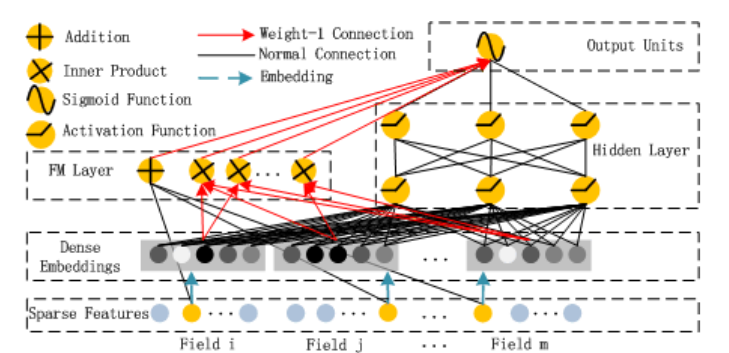
Deep & Cross Network
(实用性不高)
整体网络结构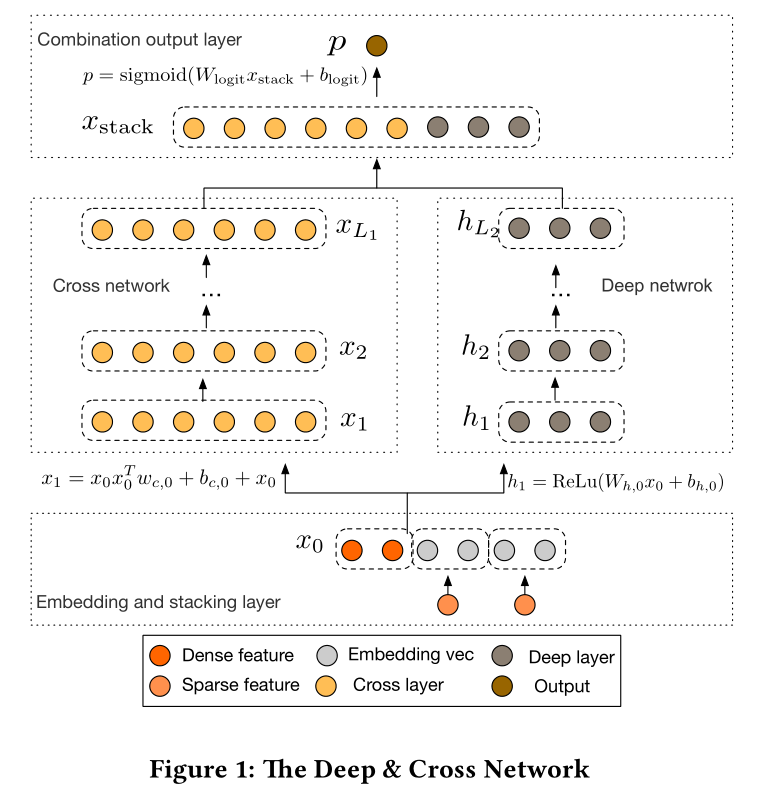
Visualization of a cross layer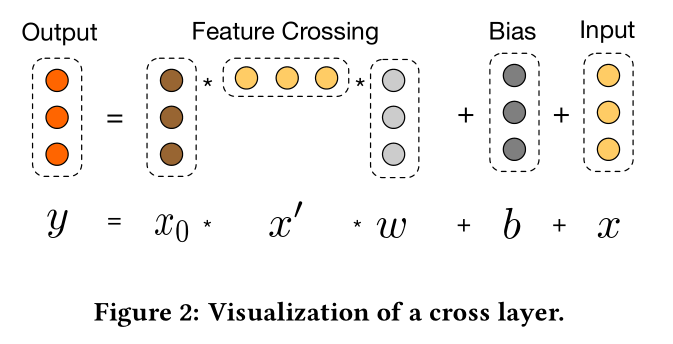
XDeepFM
整体网络结构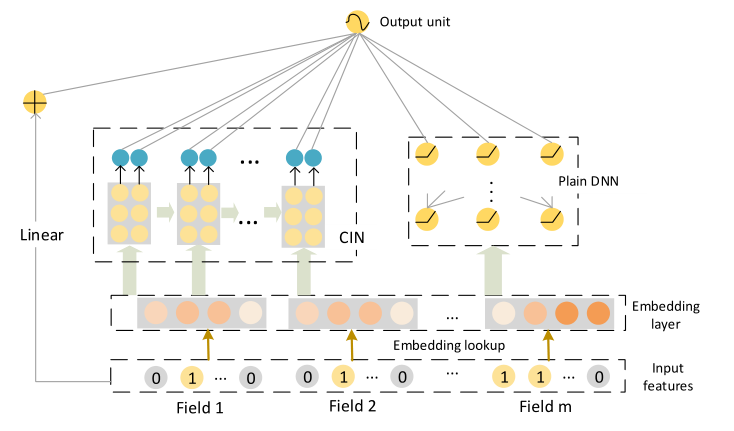
CIN部分结构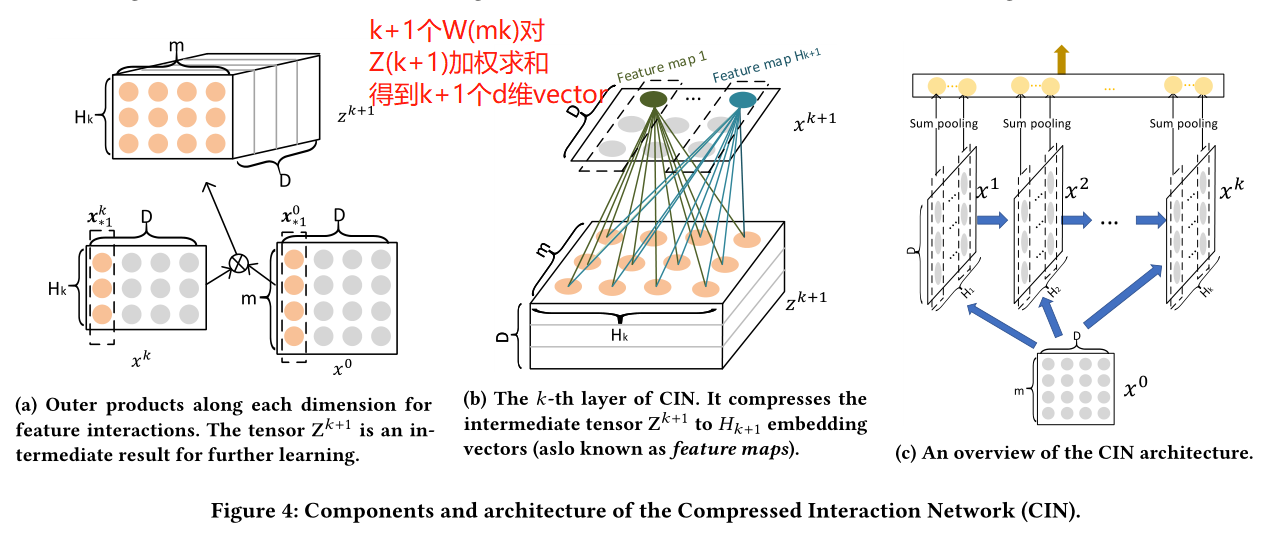
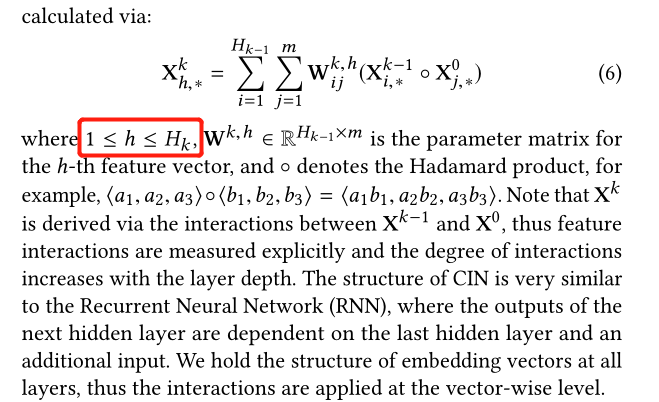
CIN输入输出:
- 输入:x0(n, m, d),n为batch_size, m为离散特征个数,d为embedding维度
- 假设第k层为xk(n, h(k+1), d),则第k+1层计算过程为:
- x0和xk在axis为1维度上两两 Hadamard product,得到(n, d, m*h(k))
- 接着进行在axis为2的维度上价钱求和得到(n, d),这样的操作做h(k+1)次得到(n, d, h(k+1)),交换axis1,2,得到(n, h(k+1), d)
- 输出:K个(n, h(i), d), i属于[1, K],在axis=1的维度拼接,在axis=2的维度进行sum pooling,得到(n, h(out)), 其中h(out)为h(1)+h(2)+…+h(K)
DIN(Deep Interest Network)
整体网络结构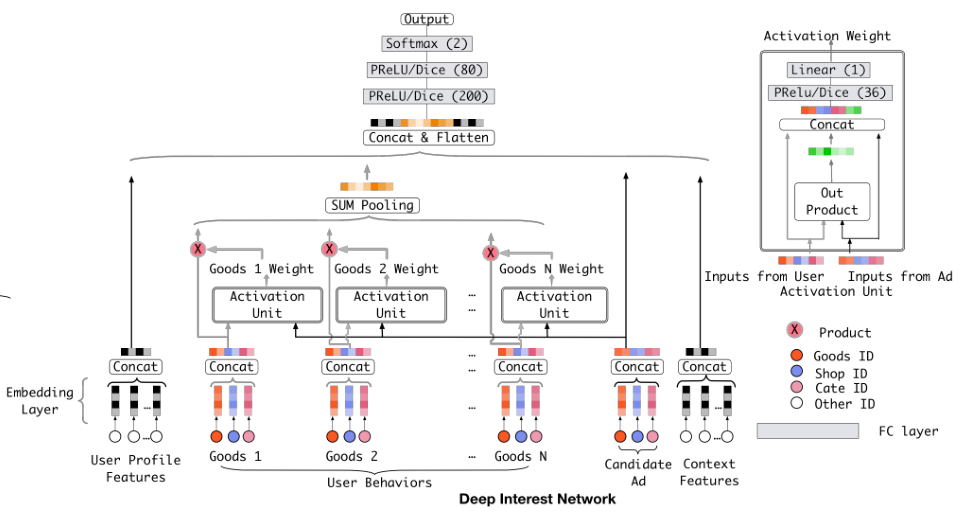
输入数据统计表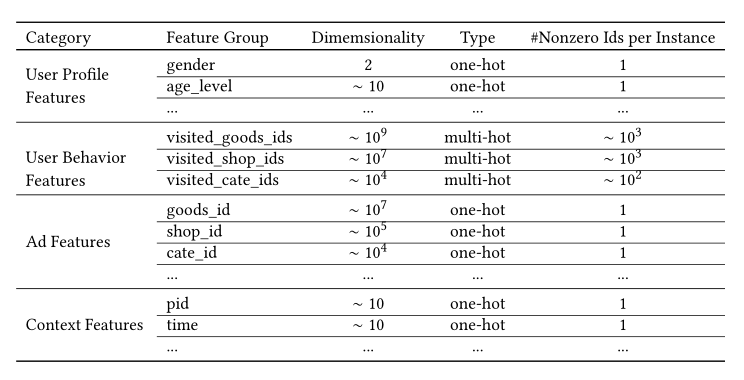
其中multi-hot在一个样本里是一个点击id的sequence
输入分四个部分:
- User Profile Features:
(n, f1),进行embedding后得到(n, f1, d),在按照embedding维度concat为,V(UPF)(n, f1*d) - User Behavior Features:
用户历史点击商品序列,以及商品对应的类别或者其他属性序列,以上图为例子,就是有三个历史点击序列,visited_goods_ids, visited_shop_ids, visited_cate_ids;首先对点击序列进行padding到最长max_len,然后得到embedding表达,最后按照embedding维度进行拼接;假设d1,d2,d3分别表示这三种id的embedding size,则最后得到的是,V(U)(n, max_len, d1+d2+d3)。对应网络结构图的话,Goods1是点击的第一个,Goods2是点击的第二个…Goods N是点击的第N个,这个N对应max_len。传统的可能就按照max_len维度进行sum pooling了,但是这样体现不出跟ad的交互,所以后面会用Ad的embedding向量表示作为query,对user behaviors的(n, max_len, d1+d2+d3)进行attention,得到max_len中每个点击的score,在加权sum pooling。 - Ad Features:
同上面的User Behavior Features,不同的是每个Ad是one-hot,这些goods_id, shop_id,cate_id同上面的User Behavior Features里的id是在一个embedding空间里。最后得到的embedding表示为:V(A)(n, 1, d1+d2+d3) - Context Features:
同User Profile Features一样,embedding后concat,得到, V(CF)(n, f2*d)
Activation Unit:
首先对U(A)repeat到,V(A)(n, max_len, d1+d2+d3),在将[V(U), V(A), V(U)*V(A)]按照embedding维度凭借起来得到,(n, max_len, 3*(d1+d2+d3)), 在连接几个全连接层最后输出,(n, max_len, 1),得到max_len维度的attention score,在对V(U)进行加权求和得到,V(U)(n, d1+d2+d3),
输出:
concat[V(UPF), V(U), V(A), V(CF)],在连接几个全连接层,得到最终的输出。